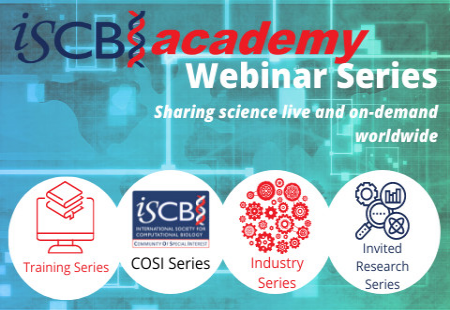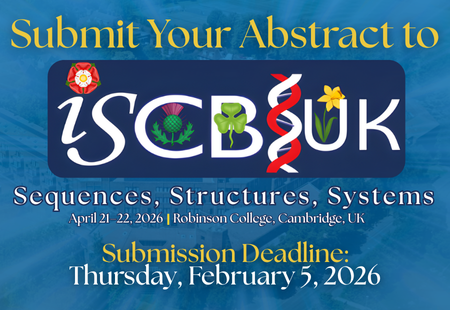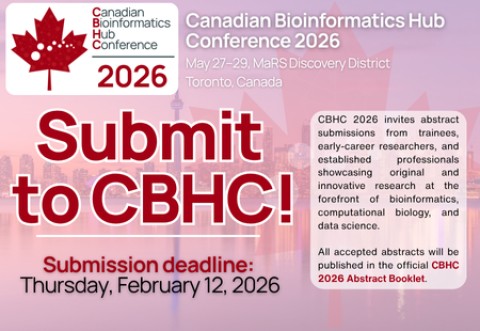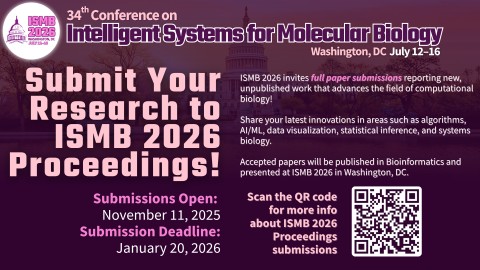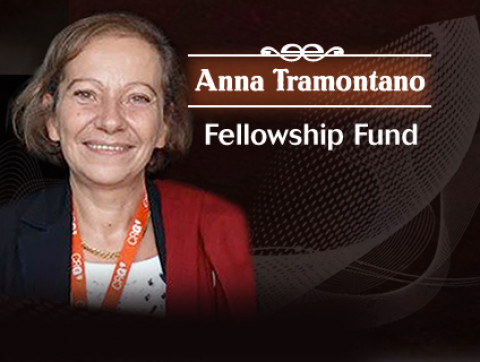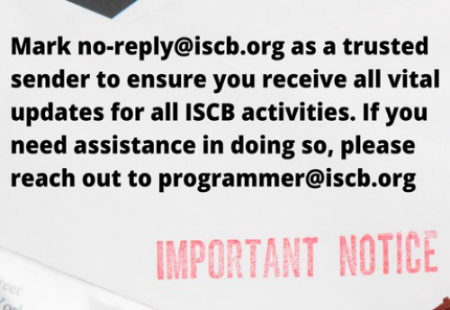8th Annual Rocky Mountain Bioinformatics Conference
Keynote Speakers
Updated Nov. 16, 2010
 |
Thomas C. Bishop, PhD Center for Computational Science Tulane University Title: Interactive Chromatin Modeling: Towards a Computational Karyotype. CV: http://dna.ccs.tulane.edu/background.html Abstract: Given a set of nucleosome positions, either from experiment or theory, it is possible to construct in near real time and interactively display 3D models of entire chromosomes at base pair resolution. These models are a first order approximation that assumes each nucleosome is a canonical octasome and that the linker DNA assumes a sequence specific conformation similar to free DNA. Our model allows thermal fluctuations in the nucleosome wrapping (i.e. entry/exit angle) and linker conformation to be introduced. Our current model is likely not an accurate representation of chromatin, but it provides critical insights, such as: properly scaled distance metrics, an indication of how intrinsic bends or other deformations in linker DNA may alter chromatin structure, identification of potential nucleation sites for the folding of DNA into chromatin, the effects of thermal fluctuations, and identification of nucleosome positions that are sterically excluded. Based on available nucleosome positioning data, a computational karyotopye of the sixteen chromosomes in the yeast genome is presented. A web based version of these tools capable of folding and displaying kilobase segments of DNA into chromatin in real time is available at http://dna.ccs.tulane.edu/icm. |
|
|
|
 |
Sol Efroni, PhD Bar Ilan University Ramat Gan, Israel CV: http://systemsbiomed.org/sol/ Title: Network as Biomarker for Ovarian Cancer Prognosis Abstract: Ovarian cancer causes more deaths than any other gynecologic cancer. As the research community continues to invest extensive efforts in identifying disease etiology, with a current multicenter effort in the form of The Cancer Genome Atlas. We have used the molecular charachteristics - genomic and epigenomic information from more than 200 women, combined with clinical features, to identify molecular networks most affiliated with prognosis. By quantifying network modifications, we measure the complex, combined, co-dependent behavior of network genes in a manner that is both extremely significant in its affiliation with phenotype, and is highly robust - enough to be able to significantly stratify prognosis in other, independent, datasets. We show how gene components of the network themselves do not serve as efficient prognostic biomarkers. Only a combined, co-dependent behavior may serve as a biomarker. By affiliating processes' description (signaling pathways) with specific phenotype, we expose these process to further study and specific intervention. |
|
|
|
 |
Larry Gold, MD, PhD CEO and Chairman of the Board, SomaLogic, Inc. Professor, University of Colorado, Boulder CV: .pdf Title: Thinking, Measuring, Calculating, and Diagnosing: From Platform to New Ideas about Biology Abstract: Biology makes no sense to a person of logic, the very people filling the seats at this conference. Biology evolved over a very long time, under conditions that changed from time to time, making reverse engineering difficult. Mathematics is logical, even to me, and thus mathematicians can analyze and calculate beautifully, using awful data as their input (a common problem). It is easier to reverse engineer car bumpers than human biology. We thought for a long time about what inputs should be the basis for deep thinking. Unlike everyone else (or nearly everyone), we decided almost 15 years ago that phenotype was better than genotype, in spite of the power of DNA sequencing technology. During those 15 years, while our colleagues decreed Personalized Medicine to be the study of genotypes, we worked to find an unbiased measurement of molecular phenotype. The platform we developed was broad proteomics, on a scale not possible through any other methodology. For the scientists at SomaLogic the thrill has been overcoming difficult scientific challenges. For people at this conference the thrill will be to access data that may be logical, or at least coherent. I will provide examples of proteomic similarities among people (and tumors) with broad genotypic differences. The vast dimensionality of genomics can be reduced through proteomics, resulting in (perhaps) insights about human biology. |
|
|
|
 |
Shawn Gomez, PhD University of NC-Chapel Hill CV: www.bme.unc.edu/index.php/directory/userprofile/smgomez Title: New Approaches for Comparing Biological Trees and Networks Abstract: Representation of biological relationships in the form of trees or networks is a core aspect of numerous biological analyses. Continued progress in this area requires improvements in how we can analyze, compare and compute information on these graphs. We have recently developed a set of related computational methods for the representation and comparison of these trees/networks. The approaches are based on the alignment of representative high-dimensional embeddings or structures that provide the ability to measure global similarity, as well as differences, between graphs. Most recently, we have developed a generalized spectral algorithm for the comparison of weighted graphs. Unlike other methods, this approach takes into account edge information that is often available and may be of significant importance in improving prediction accuracy. We have applied these approaches to problems in phylogenetic tree comparison including the detection of horizontal gene transfer events and the identification protein interaction specificity in coevolving multigene families. Together, these approaches provide a useful set of tools for future application in the analysis of these increasingly common high-dimensional data sets. Finally, such methods have broader applications in computer vision, image analysis and computational chemistry. |
|
|
|
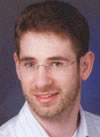 |
Carsten Görg, PhD University of Colorado School of Medicine CV: http://compbio.ucdenver.edu/goerg/ Title: Supporting Research and Analysis Across the Biomedical Literature Using Visual Analytics Abstract: Visual Analytics is an emerging academic discipline. It has been defined as "the science of analytical reasoning facilitated by interactive visualizations" and aims at supporting people to analyze and understand data through the help of computer visualizations, and ultimately make decisions based on that analysis and understanding. Visual analytics includes three main components: (1) computational techniques and algorithms for data manipulation, transformation, and analysis; (2) interactive visualizations and user interfaces to present the data; and (3) an analytical reasoning component for understanding how people think, reason, and come to conclusions, in order to design software that best leverages those abilities. We have developed a visual analytics system, named Bio-Jigsaw, to support biologists in the challenging task of finding relevant publications in the large and rapidly growing body of biomedical literature. Search queries on PubMed often return thousands of publications and it can be tedious to filter out irrelevant publications and choose a manageable set to read. Bio-Jigsaw acts like a visual index on a document collection and supports biologists in investigating and understanding connections between biological entities. We apply natural language processing techniques to identify biological entities such as genes and pathways and visualize connections among them via multiple representations. Connections are based on co-occurrence in abstracts and also are drawn from ontologies or annotations in digital libraries. Bio-Jigsaw's interactive visual representations help biologists more rapidly explore and understand connections between biological entities and find relevant publications to read. |
|
|
|
 |
Kirk E. Jordan, PhD Emerging Solutions Executive & Associate Program Director Computational Science IBM T.J. Watson Research CV: https://researcher.ibm.com/researcher/view.php?person=us-kjordan Title: Data and Analytics Transforming Healthcare for Smarter Healthcare & Life Science Abstract: In the life sciences and healthcare area there is a wealth of data. Yet, we need to make sense of this deluge of data. This is being done through what is currently termed analytics. In this talk, I will describe some of the areas that IBM is working to transform healthcare and life sciences through the use of analytics and information technology including high performance computing (HPC) systems infrastructure. While I will describe some projects underway in these areas, I will also comment that to truly take full advantage of HPC to accelerate the healthcare and life science transformation, we need to make access easier. I will describe work being done to make HPC accessible to a wide audience and eventually targeting the healthcare and life science practitioner directly. |
[Top]

